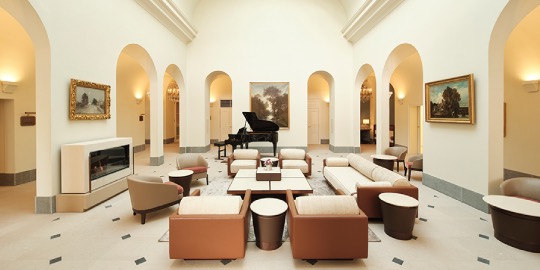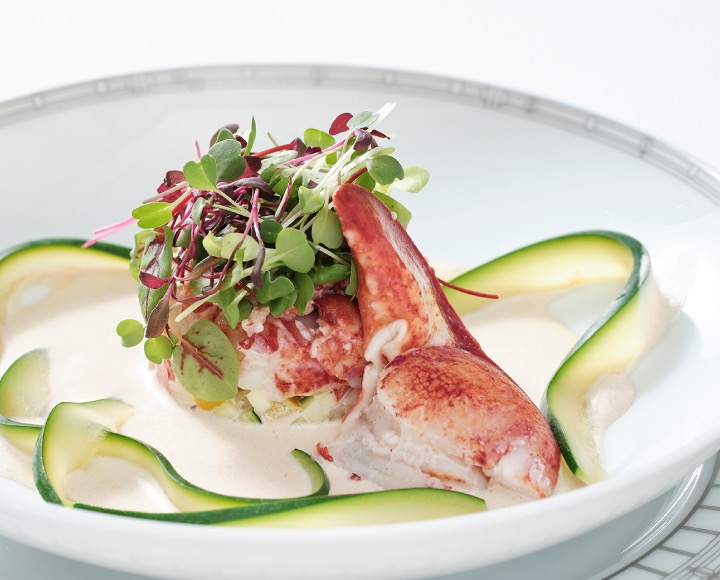Hotel de L’Alpage features several spaces which houses exquisite paintings, mainly by French artists descending from the late 18, 19 and 20th century. The paintings that can be found around the hotel are there to evoke the same feeling as you would get walking into a house in France; paintings of various sceneries, objects or portraits can be found in almost all French houses as they are a part of the ambiance and is also a big part of French culture.
It is with these intensions that the artwork you find within the hotel has been collected meticulously, one painting at a time from our owner.
The paintings and artworks within the hotel grounds are by no means extravagant, nor museum worthy; however, that is not the aim of the hotel. The space within the hotel changes with the presence of art, thus the aim of having artwork around the hotel grounds is to create a sense of an affluent, home away from home. A space where you can feel the presence of art and appreciate the mood and the space as a whole.
The art pieces found within the hotel are from the 18th to the 21th century with mostly European origins and each space within the hotel has a certain theme attached to it. This time around, we will be introducing the winter garden and the front entrance of the hotel.
The piece of art that can be found when you enter through the front door of the hotel is a modern 21st century oil painting done by a Japanese artist. By layering paints on to the portrait canvas, a rich medley of harmony using bold dark colours is achieved.
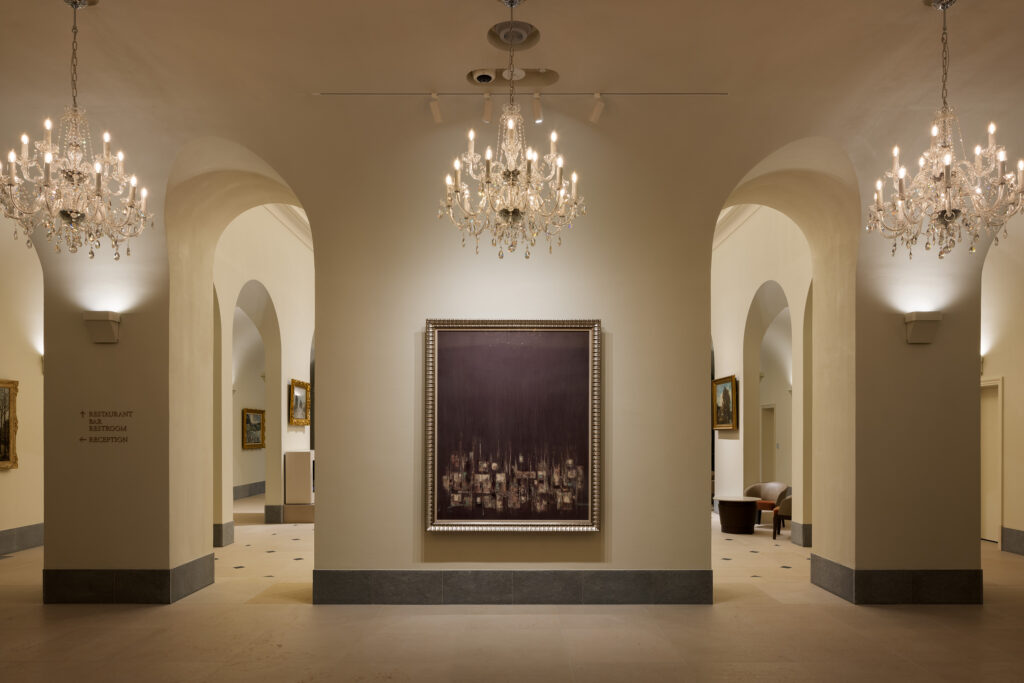
The other artworks that can be found on this area utilises light and airy colours and is from the 20th century; this creates contrast which is both pleasing to the eye and helps liven the space you walk into. The entrance and wintergarden has, loosely speaking, themes of nature and flowers which calls for vibrant colours to greet our esteemed guests with the hopes that such a space can in turn, help our guests fell relaxed when walking through our doors.
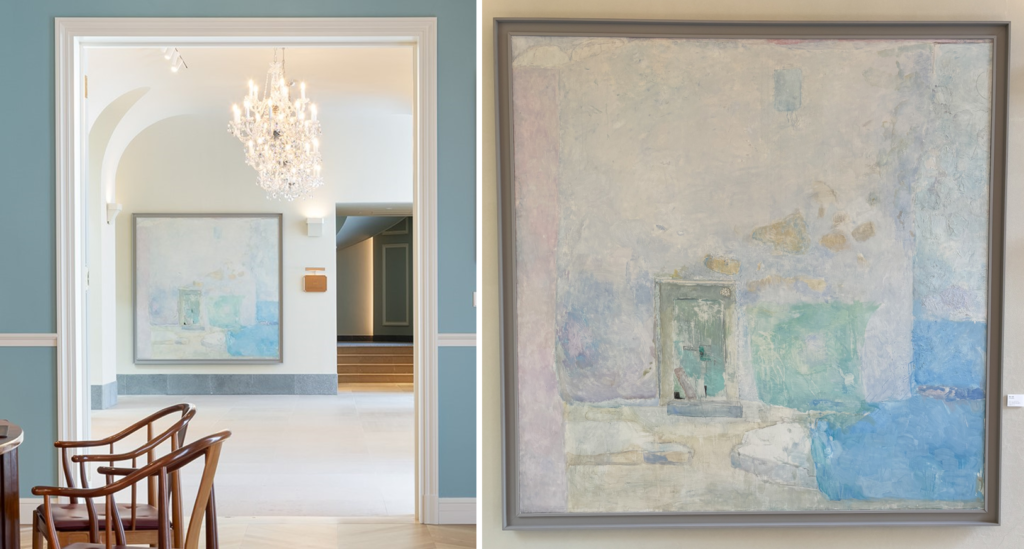
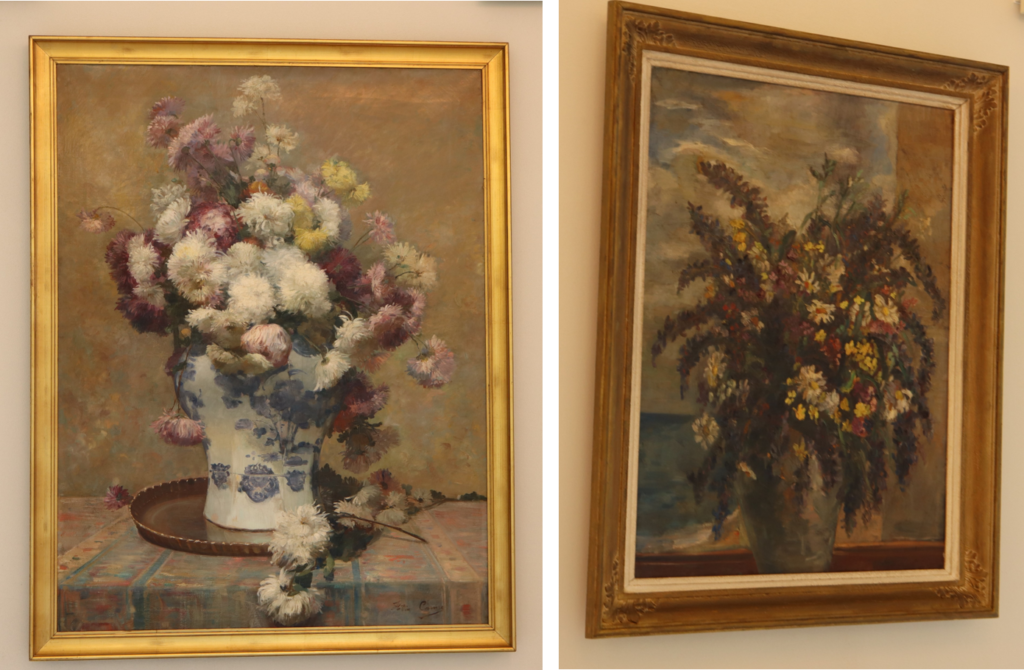
(Right) Vase fleuri devant la mer
Once you walk past the entrance hall, the space opens up to a high ceiling winter garden with a very large skylight up above. The arched double heigh ceiling along with the skylight means that lots of natural light can illuminate the winter garden throughout the day. These are all features that became prominent in French architecture during the 19th century. In line with the 19th century theme, the paintings within the winter garden are also from the 18th and 19th century. Here, we have arranged predominantly Barbizon School artwork, with a focus on natural landscape paintings. On the main wall facing forward, there is a large piece measuring over 2 meters in height and 1.7 meters in width. Above the fireplace and on the opposite wall, two landscape paintings depicting French countryside scenes are displayed. The classic beige lining the winter garden walls reminiscent of classic French architecture adorned with scenic French landscapes creates a soft and inviting atmosphere to lounge in.
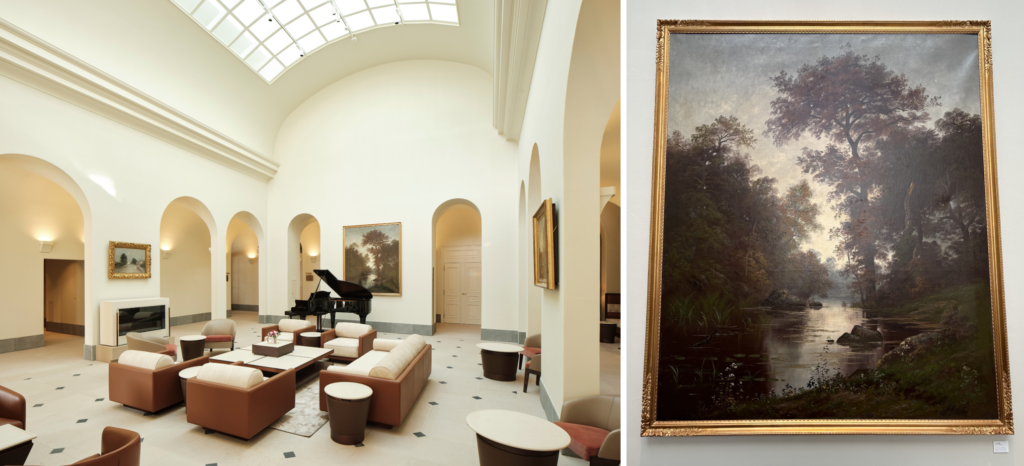
Various paintings adorn the corridors surrounding the winter garden, reception area, library bar, restaurant, and even the hallways on the guest room floors. We hope you enjoy not only each painting itself but also the “space” it inhabits and the “atmosphere” that it’s presence creates.

